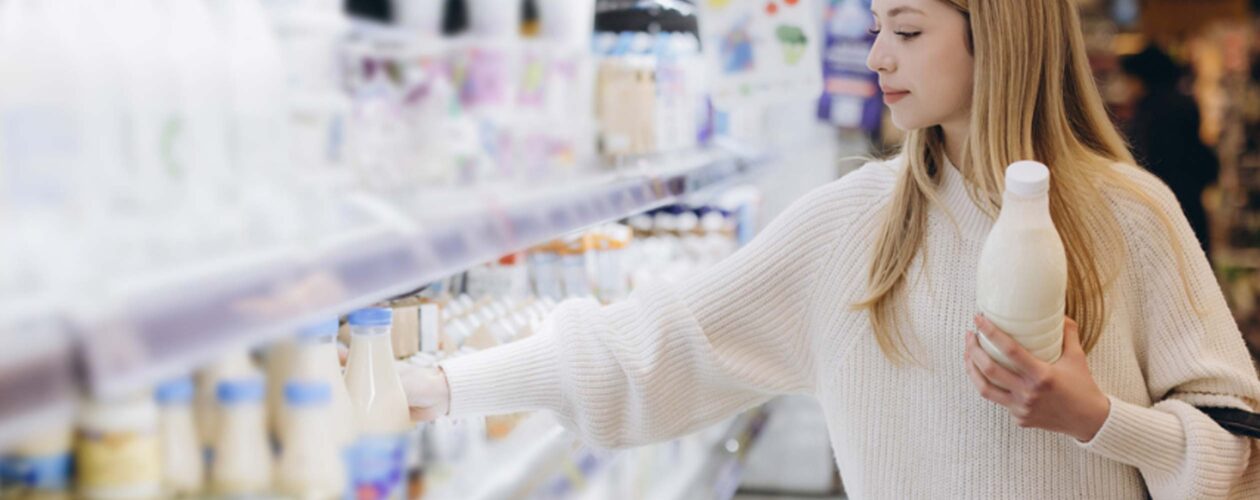New IFIC Survey Reveals How Misunderstood Food Date Labels Are Likely Feeding America’s Trash Cans
(Washington, D.C.) — Millions of Americans rely on food date labels to make decisions about what is safe to eat—and what gets thrown out. But new research from the International Food Information Council (IFIC) reveals that these labels may be doing more harm than good when it comes to preventing food waste.
The IFIC Spotlight Survey: Americans’ Perceptions Of Food Date Labeling, dives into how U.S. consumers interpret phrases like “Best by,” “Use by,” and “Best if used by.” Nearly half (48%) of respondents correctly believe these labels signal when a product begins to decline in quality. Another 29% see them as an indication of food safety risk, while 17% interpret them as the exact day the food should be discarded.
“Consumers are trying to do the right thing when it comes to keeping themselves and their families safe,” said Wendy Reinhardt Kapsak, MS, RDN, IFIC President & CEO. “But when they cannot tell the difference between quality and safety, food that is perfectly fine to eat may end up in the trash. This confusion is not just a household inconvenience—it is a public health and sustainability issue.”
More Than A Third Throw Food Away Without Checking It
This confusion plays out in daily behavior. More than 1 in 3 Americans (36%) say they discard food without assessing it once the “Best if used by” date has passed. While 54% report evaluating the food first, the criteria they use remain inconsistent and unclear.
Confidence in labels is also low. Only 29% of Americans said they have high confidence in the accuracy of food date labels, while the majority (52%) reported medium confidence, and 19% had low or no confidence at all.
“Labeling should be helpful, easy to understand, not misleading,” said Tony Flood, IFIC Senior Director of Food & Ingredient Safety. “If 71% of Americans don’t fully trust the information printed on their food, we’ve got work to do. A consistent, science-backed approach to date labeling could reduce unnecessary waste and improve trust.”
The Bigger Picture: Waste, Insecurity & The Need For Clarity
This misunderstanding is not trivial. According to the U.S. Department of Agriculture, misinterpretation of food date labels contributes to an estimated 20% of household food waste. That is an alarming statistic at a time when 13.5% of American households—nearly 47.4 million people—experience food insecurity, including over 12 million seniors.
Generational differences in how food date labels are interpreted further complicate the issue. Younger adults (18–45) are more likely to treat food dates as safety deadlines and discard food immediately. Older adults (65+) more often assess food before tossing it, possibly due to greater food handling experience or cost-consciousness.
Americans Mixed On Label Language
When asked which labeling term they would most like to see standardized across all packaged food and beverage products, Americans favored:
- “Best if used by” (21%)
- “Use or discard by” (16%)
- “Expires by” (15%)
- “Best quality if used by” (14%)
- “Discard by” (11%)
“Consistent and clear labeling, paired with ongoing consumer education, is critical to empowering Americans to make smart food decisions,” said Kapsak. “With better guidance and clearer language, we can reduce waste, stretch food budgets, and ultimately protect public health.”
View the full survey here.
Check out our latest food safety toolkit here.
Interested in learning more about how consumers understand date labels and food waste? Catch the conversation during the IFIC Expert Webinar: Best By, Use By, Toss? Solving The Date Label Dilemma on Thursday, June 26, 2pm ET, featuring insights from IFIC Senior Director, Tony Flood and Dr. Norbert Wilson, Duke University. Each IFIC Expert Webinar is free and provides opportunities for audience questions.
Register for the IFIC Expert Webinar here.
Research Methodology
The International Food Information Council (IFIC) commissioned an online survey among U.S. consumers to measure interpretation, action, confidence, and preference related to food date labeling. Data was collected from January 18-22, 2025, via an online survey of 1,000 Americans aged 18 years to 80+ years, and responses were weighted to ensure proportional results. The Bayesian confidence level for the survey sample (n=1000) is 3.5, which is roughly equivalent to a margin of error of ±3.1 at the 95% confidence level.
